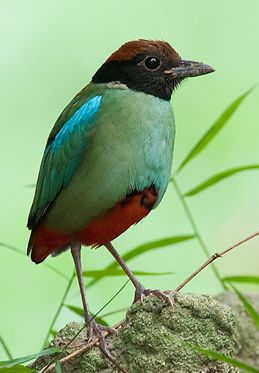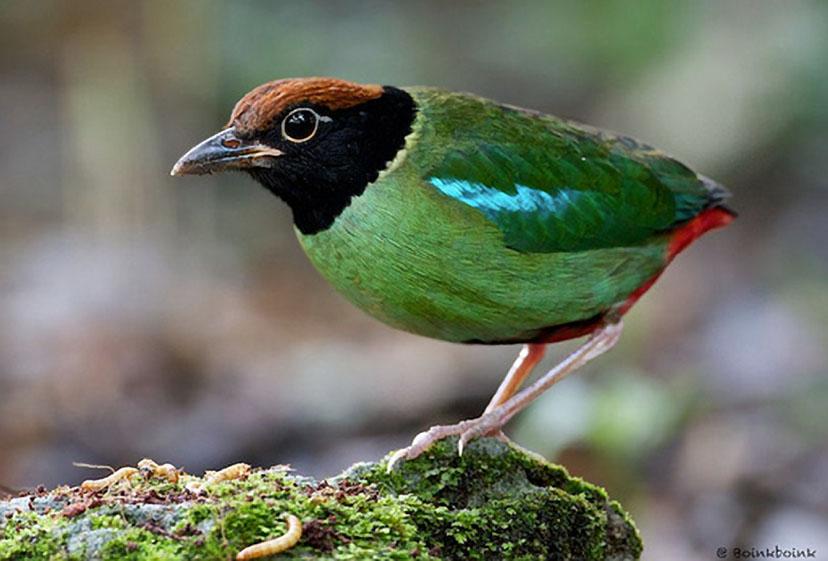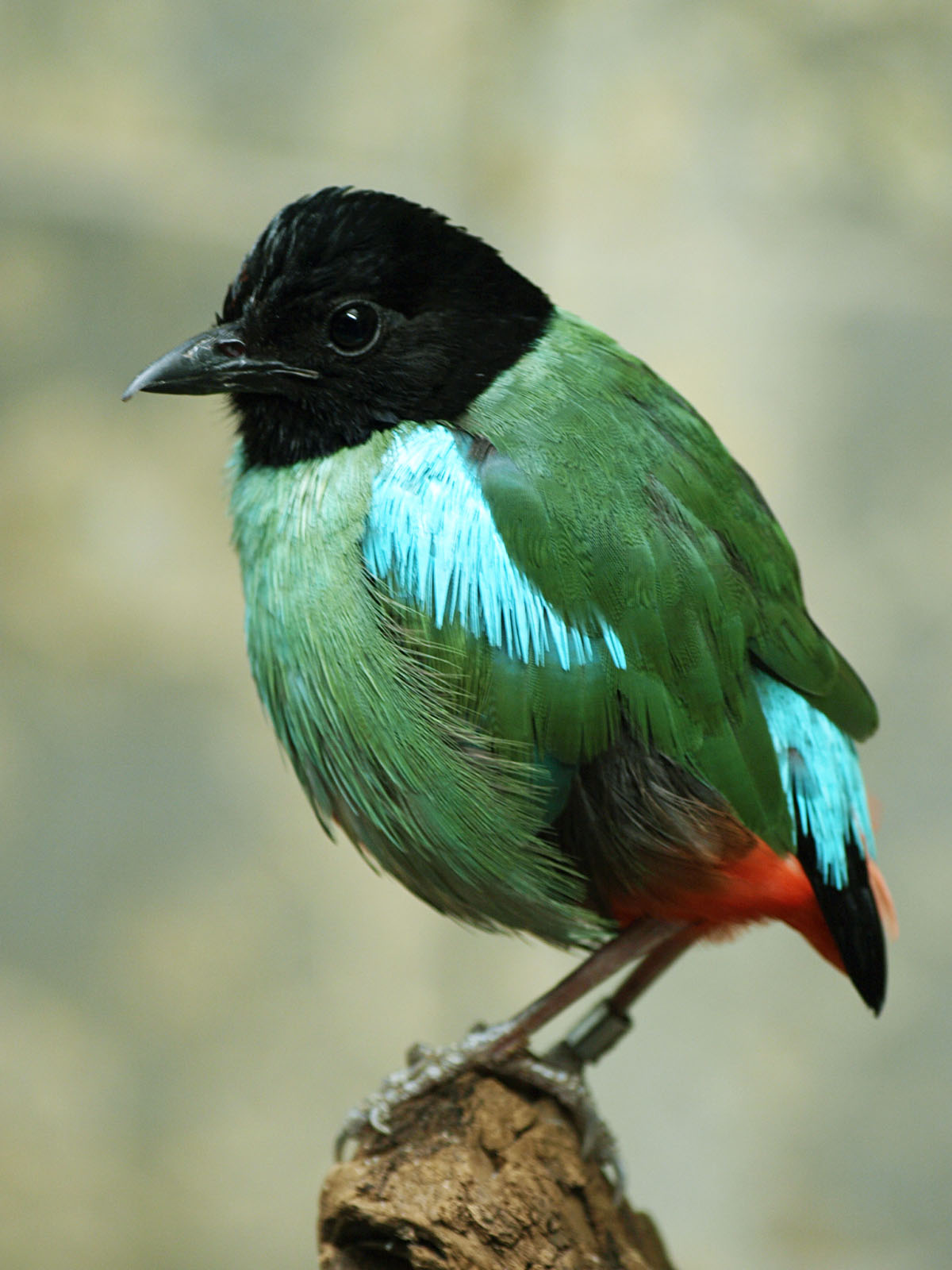
Pitta sordida
TAXONOMY
Turdus sordida P.L.S. Mьller, 1776, Philippines. Twelve subspecies
recognized.
OTHER COMMON NAMES
English: Green-breasted pitta, black-headed pitta; French: Brиve
a capuchon; German: Kappenpitta; Spanish: Pita Encapuchada.
PHYSICAL CHARACTERISTICS
7.5 in (19 cm); 1.6–2.5 oz (42–70 g). Black head and bill. Underparts
greenish, with red under tail. Upperparts and wings
are darker greenish; light bands on wings.
DISTRIBUTION
Widespread throughout Southeast Asia, from the foothills of
the Himalayas to Indonesia, the Philippines, and New Guinea.
P. s. cucullata is migratory; breeds in the foothills of the Himalayas
to Myanmar, Yunnan, and Thailand; moves south to
winter in peninsular Malaysia, Borneo, Sumatra, and Java.
Eleven other subspecies, most restricted to small groups of islands.
HABITAT
Forested and wooded habitats, including primary rainforest,
degraded or logged forest, secondary forest, bamboo, scrub,
plantations, and even cultivated areas adjacent to forests; from
sea level up to 4,900 ft (1,500 m).
BEHAVIOR
Primarily terrestrial; occurs alone or in pairs. Hops rapidly
along ground to forage and to escape if disturbed, but can also
fly strongly. Territorial. Displays observed include bowing,
head-bobbing, wing flicking, and wing/tail fanning, possibly
serving as alarm or distraction displays.
FEEDING ECOLOGY AND DIET
Forages terrestrially for insects, worms, berries, and snails.
REPRODUCTIVE BIOLOGY
Breeds February to August; varies geographically. Domeshaped
nest, usually on ground, constructed from roots, leaves
(often bamboo), and twigs. Clutch size usually three, but
ranges from two to five. Eggs white with gray, brown, or dark
purple spots more numerous on widest end. Female and male
share in nest construction, incubation, and provisioning of
young.
CONSERVATION STATUS
Not threatened; common throughout much of its range where
HABITAT
is suitable.
SIGNIFICANCE TO HUMANS
None known.
Photo Gallery of - Hooded pitta




 Animalia Life
Animalia Life